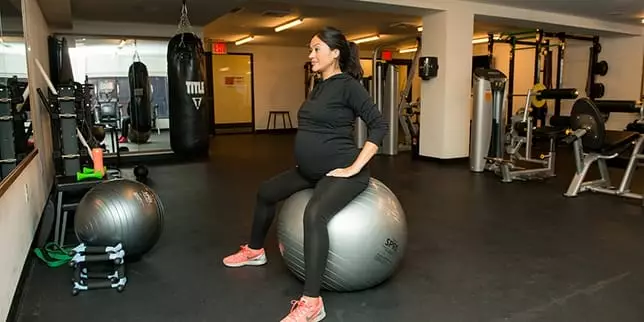Pregnancy is a transformative journey, both physically and emotionally. As you embark on this nine-month odyssey, your body undergoes significant changes, particularly in the second trimester. While many women begin to feel more energetic and may even embrace a budding baby bump, hip pain can emerge as an unwelcome companion. Understanding the nature of this discomfort and how to alleviate it can improve overall well-being during this special time.
Hip pain during pregnancy, particularly in the second trimester, can result from various factors. Some experts suggest that the sciatic nerve may get impinged, leading to discomfort radiating from the lower back to the hips and buttocks. This condition is commonly referred to as sciatica. Alternatively, round ligament pain, which is associated with the stretching of ligaments that support the uterus, can also contribute to hip discomfort. As your body prepares for childbirth, these ligaments accommodate the growing uterus, leading to possible pain in the groin area.
Understanding the underlying causes of hip pain is crucial in identifying appropriate relief strategies. Being proactive in addressing discomfort can significantly enhance one’s pregnancy experience.
If hip pain has become a part of your pregnancy journey, certain exercises can help you find relief. Always consult with a healthcare provider before starting any new exercise regimen. Here are several movements specifically designed to alleviate discomfort in the hip area:
1. Fire Log Pose: This seated stretch targets the outer hips. Begin by sitting on a folded blanket and crossing one ankle over the opposite knee. Leaning forward slightly can intensify the stretch, promoting flexibility.
2. Standing Sideways Stretch: Position yourself beside a doorway for support. Cross one leg over the other and lean into the door frame, allowing your body to feel the stretch along your side.
3. Ankle-to-Knee Pose: Perfect for those with good balance, this standing pose encourages hip opening and strengthens the standing leg. Rest your ankle on the opposite knee and lean forward to deepen the stretch.
4. Side-Lying Relief: Although not a traditional exercise, lying on your side with a pillow between your knees eases sciatic pain. This restorative position helps to align the spine and reduce strain.
5. Bridge Pose: Lying on your back with knees bent, lift your hips towards the ceiling to create alignment from knee to shoulder. This posture strengthens the lower back and relieves hip tension.
6. Happy Baby Pose: Suitable for all stages of pregnancy, this playful pose invites warmth into your hips. Holding the feet while drawing your knees toward your armpits provides deep relief.
7. Standing Pelvic Tilt: Done against a wall, this exercise promotes spine flexibility. By gently arching and flattening your back, you can manage discomfort effectively.
8. Mindful Walking: Paying attention to your posture while walking can be beneficial. Engaging the glute muscles maintains pelvic alignment, reducing strain on your hips.
Emphasizing gentle stretching and mindful movement can significantly contribute to physical wellness throughout pregnancy.
Beyond exercises, various strategies can contribute to managing hip pain during pregnancy. Regular prenatal massages can provide relaxation and relieve tightness in the muscles surrounding the hips. Seeking advice from professionals specializing in prenatal care can guide you in understanding optimal positions and techniques to align your body comfortably.
Additionally, using supportive pillows while sleeping can help maintain proper body alignment throughout the night. An effective sleep position, such as lying on your side with a pillow between your legs, can provide substantial relief.
Heat therapy, such as warm baths or heating pads, can soothe tight muscles and alleviate discomfort. Always remember to apply heat cautiously, ensuring the temperature is safe for you and your baby.
While mild discomfort is often part of pregnancy, severe or persistent hip pain warrants medical attention. It’s essential to differentiate between typical pregnancy-related pain and conditions that may require professional intervention. Consultation with a healthcare provider or a physical therapist specializing in prenatal care can help tailor strategies specifically suited to your needs.
While pregnancy presents numerous joys, it can also bring about challenges such as hip pain. Understanding its origins and utilizing a combination of gentle exercises and supportive strategies will empower you to enjoy your pregnancy journey more fully. By being proactive in self-care, you can pave the way for a healthier and more comfortable experience, allowing you to focus on the joy of impending motherhood. Remember, your well-being is paramount, and supporting your body during this transformative time is essential.

